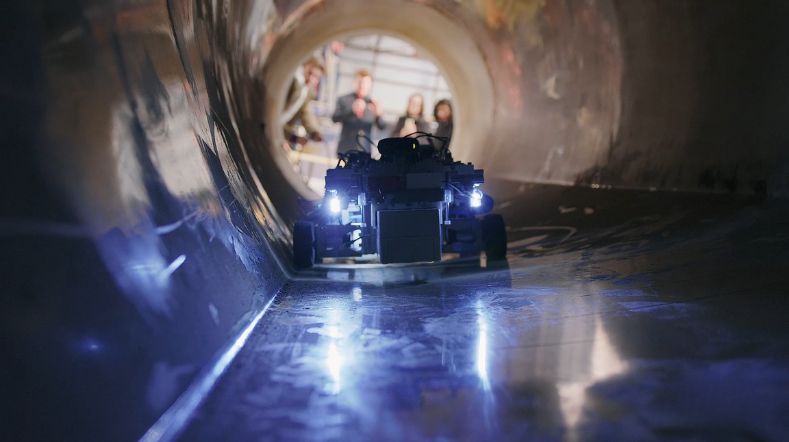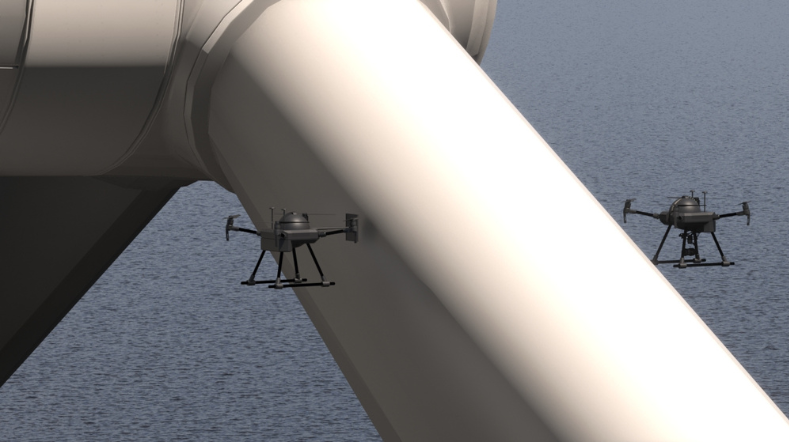Deploying robots to protect our country
Drones exploring dangerous areas, robots enhancing the senses of security personnel— the rapid development of robotic platforms and artificial intelligence (AI) offers tremendous opportunities for security partners such as the police, the Custodial Institutions Agency, and the Royal Netherlands Marechaussee. Collaboration is key to boosting the innovative power of the justice and security domain in the Netherlands and accelerating the application of new developments.
JenV robotics collaboration program
For the past three years, TNO and the Ministry of Justice and Security (JenV) have been working on an innovation ecosystem in which security partners, research institutions, and companies collaborate in the field of robotics. Driving forces behind this initiative are Ingrid from TNO, robotics program coordinator, and Bas, senior advisor for Knowledge and Innovation at the Directorate for Innovation, Knowledge and Strategy at JenV.
Why this collaboration?
Bas: “Individually, various security partners within JenV were already conducting research and innovation in robotics. By developing together, we use our resources more efficiently and increase our innovative capacity.” Ingrid adds: “Together, we can move forward more quickly—not just in terms of technology, but also in areas like ethics and practical applicability.” Bas: “Our ultimate goal is to implement robotics in a safe and responsible way. We can only achieve that together.”
Not a luxury, but a necessity
Boosting innovation capacity is vital in the security domain. Bas: “The pressure on our national security is increasing. Think of global tensions, but also cross-border crime and the security needed in places like ports. In today’s tight labour market, there are never enough people available to handle that growing pressure.” Faster innovation in robotics and AI is therefore not a luxury, but a necessity.
An invitation to co-innovate
TNO and the Ministry of Justice and Security (JenV) invite companies, research institutions, and other security organisations to join the innovation ecosystem. Would you like to contribute or learn more? Please contact Tjarda Krabbendam using the button below.
The power of collaborative innovation
For many security organisations, the use of robotic platforms is still new. Their added value increases significantly when these platforms can also autonomously support specific tasks. That’s why various security organisations are contributing use cases where they expect autonomous platforms to provide meaningful support to their current personnel. Despite the impressive capabilities of today’s technology, there is still an innovation gap to bridge. What exactly these platforms need to be able to do—and how well they need to do it—is something TNO is currently investigating in practice. This helps clarify both the needs and the requirements, enabling companies to respond more effectively. TNO can then verify and validate these developments on behalf of the security organisations. In this way, the parties complement each other perfectly. Bas: “The more knowledge we share, the faster we find solutions.” Ingrid adds: “It’s not just about technology. We’re also dealing with questions around ethics, privacy, human-machine interaction, and the integration of robotics into public organisations—so, responsible AI. In those areas too, we can inspire and learn from one another.”
Focus on autonomy and telepresence
Current developments within the JenV robotics collaboration programme include a robot for reconnaissance, a security robot for guarding sites and assets, and social robots providing support in prisons. When asked which technological developments the partners will focus on in the near future, Ingrid responds: "First and foremost, autonomy: we’re working to ensure that robots can act independently. That includes navigating, interpreting their surroundings (like recognising a desk), making comparisons (a bag was here before, and now it’s gone), and performing specific tasks. Advancing that autonomy is the leap we need to make."
Collaboration between humans and machines
A key theme for the collaboration partners is human-machine interaction. How can we best harness the strengths of both technology and people? Ingrid: "The real potential for robotics lies in what we call ‘dull, dirty, and dangerous’ work. For example, patrolling the same area repeatedly as a security guard, or searching for victims in a collapsing building. If people can work alongside robots in these kinds of tasks, their jobs become more interesting and less risky." So what does that collaboration look like in practice? Bas: "A human can monitor the situation at critical moments and, through telepresence, control more complex actions—such as remotely operating a robotic arm."
Accelerating implementation of solutions
Although the technical possibilities are already impressive, implementing robotics in practice is complex and time-consuming. Ingrid: "People often imagine the Hollywood version of robots that can dance. But in reality, we’re dealing with public service tasks. That means we have to consider all the frameworks and follow the testing and validation processes step by step." Research within the innovation ecosystem is the first step, helping to identify which tasks robotics can and cannot support in practice. The partners then work together to explore how implementation can be accelerated. Next steps include further development with companies and other government bodies, setting up a test track for robotics concepts, and a plan for an accessible universal platform. This platform will map out all the necessary conditions and standards, such as ethical considerations, (cyber)security, and regulations.
Opportunities for the private sector
In addition to security partners and research institutions like TNO, the private sector is a third essential player in this innovation ecosystem. Bas: “Companies can leverage the knowledge we’ve built to develop products for multiple sectors—within government, such as Defence, the fire brigade, and hospitals, but also beyond, like private security, logistics, agriculture, and so on. For example, using robots to support surveillance and security could be relevant to many more organisations.” This potential for scale makes it especially attractive for businesses to get involved.
A cautious look ahead
What do Ingrid and Bas see for the future? Ingrid: “I hope that in five years, solutions will be coming from the market and companies will be developing them independently. That we’ll have the knowledge base to validate those solutions. And that the first robot concepts will be operational with security partners.” And in fifteen years? Bas: “By then, robots will likely be part of everyday work. It’s a broader trend across all sectors. I already have a robot vacuum cleaner—and I can’t live without it anymore.”
TNO and Robotica
Curious how TNO applies its expertise in robotics? Robin Lieftink, Scientist Robotics and Telepresence at TNO, explains it in an episode of TNO Unboxed.
Get inspired
Improving wind turbine maintenance with the sensor installation robot


X-ray drone technology and digital twin to detect sub-surface defects within turbine blades


Wind turbine inspections with autonomous drones and digital twin modelling


Robotics


